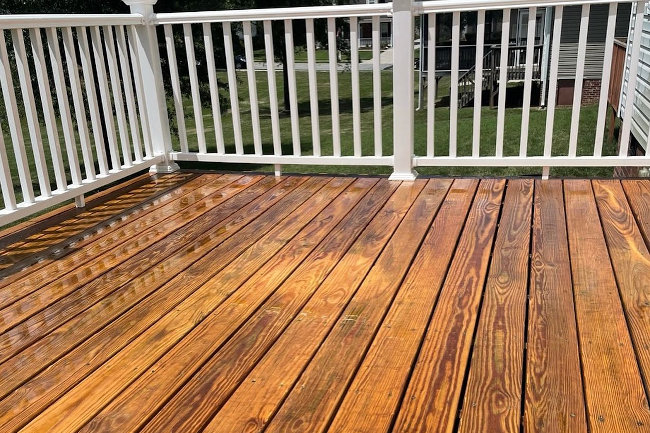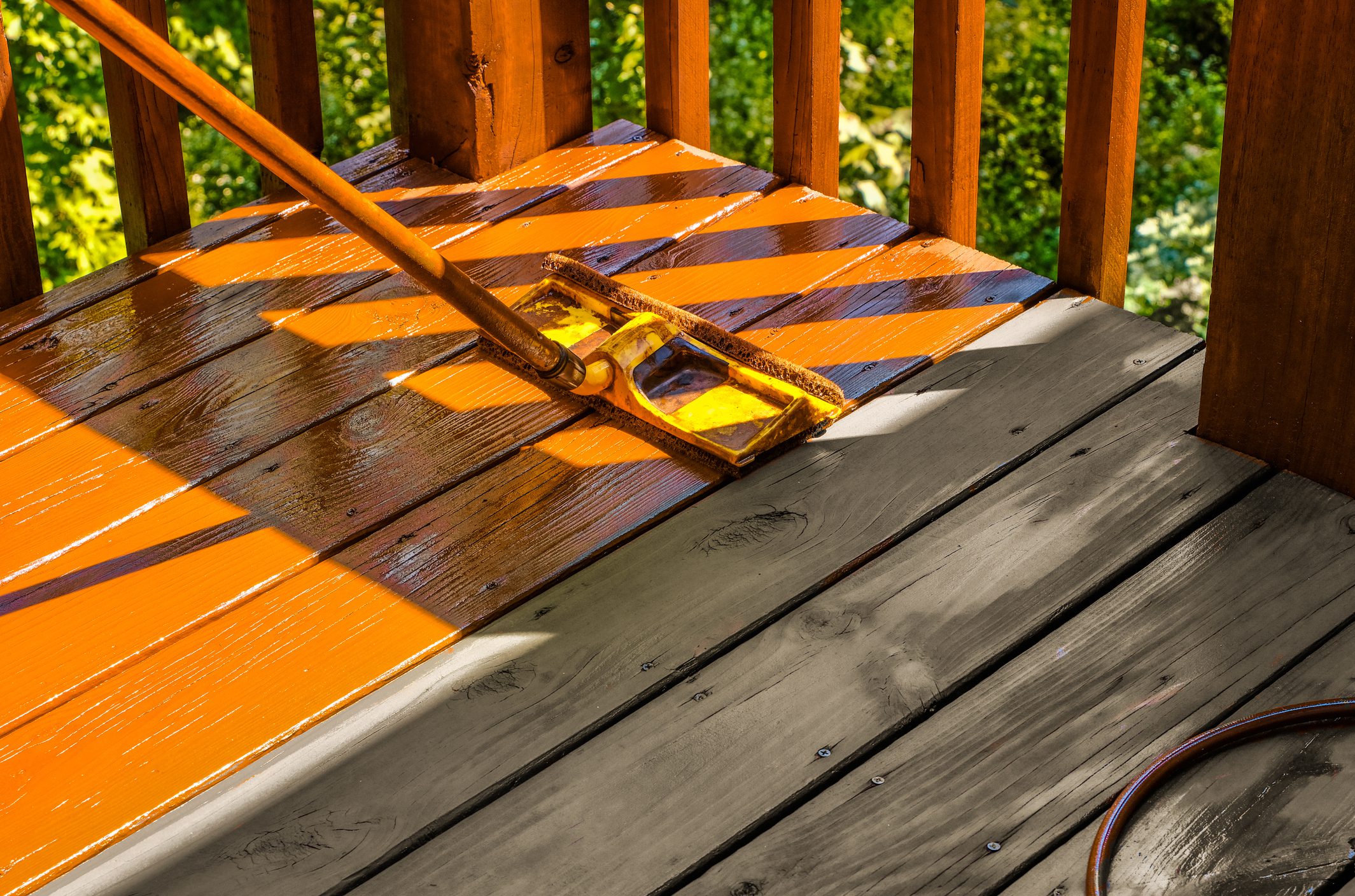Improved Security: Fence Staining and Sealing Solutions
Improved Security: Fence Staining and Sealing Solutions
Blog Article
Choosing the Right Stain for Your Fence: Tips and Factors To Consider
When it involves boosting the look and maintaining of your fence, choosing the right discolor is important. With a wide range of options offered, it can be overwhelming to establish which tarnish will finest match your requirements. This overview will certainly give you with considerations and pointers to help you make a notified decision. We will explore the various types of fencing spots, variables to consider prior to picking a discolor, tips for preparing your fence for discoloration, and the differences in between water-based and oil-based spots. In addition, we will look into choosing the right discolor shade to enhance your fencing and improve your exterior room. By adhering to these guidelines, you can make certain that your fence stays protected and aesthetically pleasing for years ahead.
Understanding Various Kinds Of Fencing Spots

On the various other hand, water-based discolorations are made from acrylic or latex and provide a more subtle shade to the wood. Water-based stains are simpler to cleanse up and have a faster drying out time contrasted to oil-based stains.
Choosing in between water-based and oil-based spots depends upon different factors, consisting of personal choice, the desired appearance, and the degree of upkeep required. Oil-based discolorations are advised for fence high-traffic locations or those regularly revealed to severe climate condition. fence staining and sealing. Water-based stains, on the other hand, are a prominent selection for surround property areas where look and convenience of use are essential
When selecting the best stain for their fencing,Comprehending the distinctions in between oil-based and water-based stains aids property owners make a notified decision. Thinking about the certain requirements of the fence, such as its area, exposure to sunshine, and preferred visual, will ensure that the chosen tarnish provides durable protection and enhances the total elegance of the fencing.
Variables to Think About Prior To Picking a Discoloration

An additional aspect to consider is the kind of timber your fencing is made from. Various kinds of timber absorb discolorations differently, causing varying degrees of shade strength and longevity. For instance, softwoods like want may need more regular staining contrasted to woods like cedar or redwood. In addition, certain timbers might be extra prone to issues like rot or insect invasion, which might influence the option of tarnish to shield and protect the fencing.
The climate and climate conditions in your location should additionally be taken right into account. If you live in an area with severe wintertimes or high humidity, you may need a tarnish that provides added defense against wetness and UV rays. Similarly, if your fencing is revealed to direct sunshine for extended periods, a discolor with UV preventions can aid protect against fading and discoloration.
Lastly, it is essential to consider your desired visual. Various stains provide various colors and surfaces, allowing you to tailor the look of your fence (fence staining). Consider the general design and design of your building, as well as any neighborhood laws or property owner organization guidelines that may dictate the appropriate stain shades
Tips for Readying Your Fence for Staining
Cleaning up the fence is a crucial step as it gets rid of dust, gunk, and any previous finishings that may interfere with the staining process. Rub the surface area delicately, paying added attention to locations with persistent discolorations or mold and mildew.
This step is vital as staining a damp or damp surface area can lead to poor adhesion and an unequal coating. Ensure that the fence is totally dry before proceeding with the discoloration procedure.
Before staining, check the fencing for any kind of damages, such as loose boards or nails. Repair any type of concerns to make sure that the fencing is structurally audio. Additionally, take into consideration using a timber conditioner or brightener to the surface. This product aids to open the wood pores, enabling the discolor to penetrate much more effectively and evenly.

Comparing Water-Based and oil-based Stains
When picking a stain for your fencing, it is essential to contrast the attributes and advantages of water-based and oil-based discolorations. Both sorts of spots have their very own advantages and factors to consider, so it is crucial to recognize the distinctions between them.
Oil-based stains are known for their resilience and resistance to tear and use. They pass through deeply into the timber, offering exceptional security versus the elements. They additionally enhance the all-natural elegance of the wood by highlighting its grain and structure. In addition, oil-based stains have a tendency to last longer than water-based discolorations, making them a prominent selection for fencings.
On the other hand, water-based stains are a lot more eco-friendly and simpler to clean up. They have a reduced VOC (unpredictable natural substance) web content, which implies they launch less hazardous fumes into the air. Water-based spots likewise dry quicker, permitting a quicker application and less downtime. Nevertheless, they may not give the very same degree of defense as oil-based discolorations, specifically in rough climate condition.
Inevitably, the option between water-based and oil-based discolorations depends upon your particular needs and choices. When making your choice, consider variables such as toughness, environmental influence, and ease of application. Consulting with a specialist or seeking suggestions from experts can additionally help make certain that you select the right discolor for your fence.
Selecting the Right Stain Color for Your Fencing
The selection of an ideal discolor shade for your fence is a crucial aspect of improving its visual allure and complementing the general design of your outside space (fence staining and sealing). The appropriate stain color can transform a plain, average fence into a striking centerpiece that includes deepness and personality to your residential or commercial property
When selecting a tarnish shade for your fencing, it is necessary to think about the design and style of your home. Earthy tones such as browns and neutrals can develop a cozy and welcoming appearance if you have a timeless or traditional design home. On the various other hand, if you have a modern or contemporary home, you may think about choosing for bold and vibrant colors that make a declaration.
An additional aspect to think about is the natural surroundings of your residential property. If you have a go to these guys great deal of greenery, a tarnish shade that enhances the all-natural landscape, such as environment-friendlies or deep reds, can create a natural and harmonious appearance.
Furthermore, it's worth considering the upkeep required for various discolor colors. Lighter shades have a tendency to show dust and wear even more quickly, while darker colors can conceal blemishes and need less constant touch-ups.
Eventually, the selection of discolor color for your fencing should mirror your personal design and preferences - deck cleaning. Make the effort to explore various alternatives and seek advice from with experts if required, to ensure that you select the perfect discolor shade that boosts the charm and charm of your fence
Verdict
In verdict, when it comes to picking the appropriate tarnish for your fencing, it is crucial to comprehend the different kinds of discolorations offered and think about elements such as resilience and desired look. Choosing the best stain shade can improve the overall aesthetics of your fencing.
We will explore the various types of fencing spots, elements to consider prior to choosing a tarnish, ideas for preparing your fence for discoloration, and the differences between oil-based and water-based stains.Differentiating in between water-based and oil-based spots is essential when comprehending different kinds of fencing stains. Water-based discolorations are simpler to cleanse up and have a quicker drying out time compared to oil-based spots. Additionally, oil-based spots tend to last longer than water-based spots, making them a preferred option for fencings.
In conclusion, when it comes to selecting the appropriate stain for your fencing, it is important to comprehend the various types of spots readily available and consider aspects such as resilience and wanted look.
Report this page